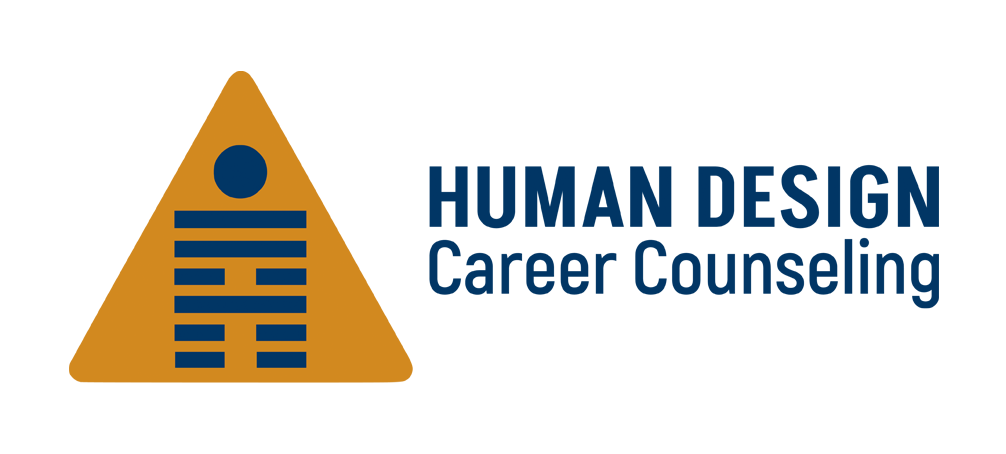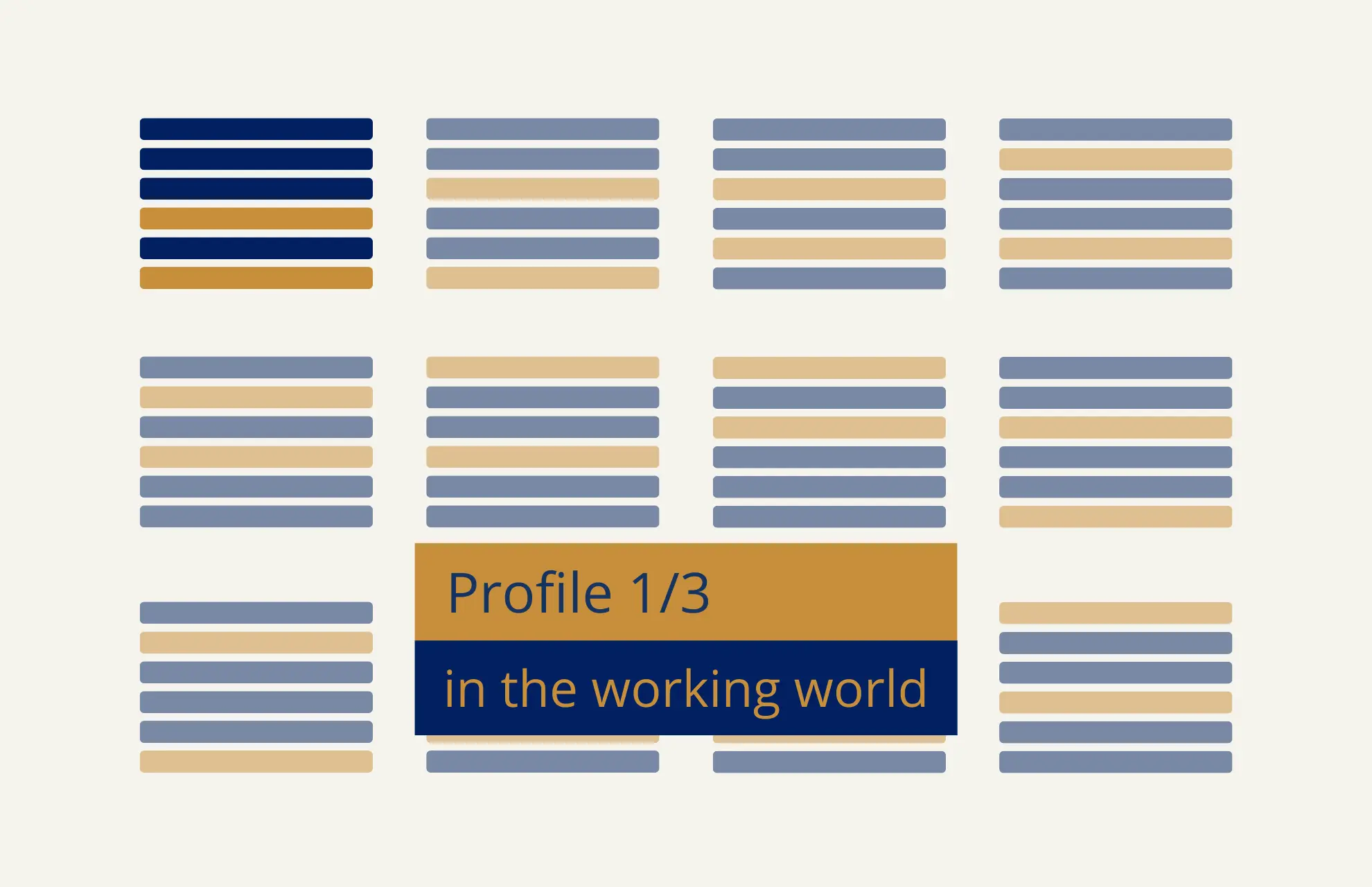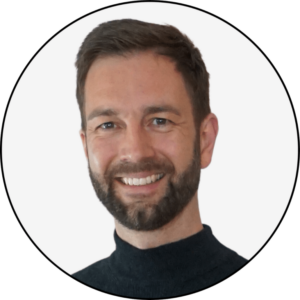Is your profile the Human Design 1/3 profile? In this blog post, you will find out how your profile is made up and how you can use your profile to develop naturally in your professional life. Let yourself be inspired!
3 key facts about the Human Design 1/3 Profile
- Learning through research & experience: People with the Human Design 1/3 profile combine in-depth analysis (1st line) with a practical, experimental approach (3rd line).
- Perfect combination for career & development: The 1/3 Profile is ideal for professions that require in-depth analysis, problem solving and innovation, as it combines theory and practice.
- Flexibility as a success factor: The combination of in-depth knowledge and experiential learning makes the Human Design 1/3 profile particularly adaptable – an important strength in a constantly changing world of work.
Find out in the blog how you can use your Human Design 1/3 Profile specifically for your professional development!
The profiles in Human Design are basically derived from the six lines of the basic structure of a hexagram from the I Ching, the Book of Changes (see illustration below). There are a total of 12 combinations of these lines that make up the profile. In your case, these are the two lines 1 and 3. In your Human Design Chart, you will also find your two lines as a number behind the dot on your conscious sun (personality) and your unconscious sun (design).

Characteristics of the lines
Each profile in Human Design offers a unique perspective on the world and a specific approach to life. Some interesting characteristics can be derived from your profile. You are aware of the character traits in the first digit. You are rather unconscious of the traits of the second digit, especially if you have not yet reached the second half of your life. The Human Design 1/3 profile also has interesting traits in which you are sure to recognize yourself in your profession.
In traditional human design, the characters shown in the illustration are assigned to the six lines. Interesting conclusions about professional life can also be drawn from these characteristics. Between the first three and the second three lines (lower and upper trigram) there is a change in the way you learn in life. This is more about learning for life than learning at school or university.

How you discover life
With the first three lines (seen from the bottom up), the unfolding of your life relates very much to your own personality. In general, it is a self-centered way of learning about life. So if you have a profile with line 1, 2 or 3, you are discovering life in a self-centered way with respect to that line.
With lines 4, 5 and 6, you develop strongly in relation to your fellow human beings. Human Design profiles can consist of two self-related lines (e.g. Human Design 1/3), two environment-related lines (e.g. Human Design 4/6) or a mix of self-related and environment-related lines (e.g. Human Design 5/1).
It is also important to realise that one’s own development always has to do with the inner and outer world. No one can develop naturally if they are only introverted, not even a self-centred Human Design profile. In the same way, nobody can only develop in the outside world, not even an unworldly profile. Without an object in the outside world, we do not recognise ourselves as a subject. The inner and outer worlds are connected in the same way that yin and yang are connected (law of polarity). Consider this categorisation as a focus topic and see how these findings affect you in combination with your profile.
The Human Design 1/3 profile
The first line in your profile has a strong urge to understand things in depth. You are research-oriented and look for a firm foundation in your knowledge and beliefs. The first line gives you orientation, aiming for security and stability through understanding and foundation. Ask yourself: Am I also learning on the job by digging deep to gain security in the work environment?
The third line involves an experimental and experience-based approach. You tend to learn through trial and error. You are often hands-on and learn best through your own experiences and sometimes through mistakes. Making mistakes is not a shame for most employers, but an asset to make things better in the future. This line brings with it a certain resilience, as you often have to learn to deal with disappointment and failure. This only makes you stronger.
Human Design 1/3: The combination of lines 1 and 3
With the 1/3 profile, you combine the depth and pursuit of certainty of the first line with the flexible, experimental nature of the third line. You tend to be both theoretically grounded and practically oriented. Perhaps practice-oriented research is something for you, where you can develop your Human Design 1/3 profile?
In addition to your profession, you have a strong urge to explore your own being. You are also able to translate your deep insights and knowledge into practical applications. Perhaps you can also combine self-exploration with your profession? As a psychologist or coach who is involved in application-oriented research? These are just examples, explicitly for the Human Design 1/3 profile. The other aspects of your Human Design Chart should of course be included in an overall analysis.
Basically, the 1/3 profile can be a powerful combination for growth and self-understanding, as it allows you to learn and act from both a grounded and experiential perspective. I want to encourage you to develop this profile in your job as well.
“I have not failed. I’ve just found 10,000 ways that don’t work.”
Thomas A. Edison
3 tips for your professional development
Tip 1: Use your strengths in research
Use your analytical skills and desire for in-depth knowledge in your profession. Careers that require research or detailed analysis could suit you particularly well. Your drive to understand things in depth can help you solve complex problems and develop innovative solutions.
Tip 2: Learn from experience
Your ability to learn through trial and error is a great strength. Use professional challenges as an opportunity to grow and develop. Always step out of your comfort zone and do something new. It doesn’t always have to be big things. Even small experiments have great charm for you. Be open to new experiences and experiments, as they help you to expand your skills and knowledge.
Tip 3: Be flexible and adaptable
Your combination of theoretical understanding and practical experience makes you very adaptable. In a rapidly changing world of work(VUCA world), this can be a great advantage. Be prepared to take on roles that require flexibility and use your ability to adapt quickly to new situations to excel in your profession.
I hope I was able to help you with my blog post and bring you closer to your Human Design 1/3 profile. If you would like to find out more about my offer, take a look at the information in the box below. Thank you for reading to the end.
FAQ: Questions about the 1/3 profile in Human Design
What are the main features of the Human Design 1/3 profile?
The 1/3 profile in Human Design combines the depth of research (line 1) with practical experience (line 3). People with this profile are both theoretically and practically inclined.
How can someone with a 1/3 Human Design profile make the most of their strengths in professional life?
People with a 1/3 profile can use their analytical skills and propensity for experimental learning to solve complex problems and develop innovative solutions.
What tips can help people with a 1/3 profile to promote their personal growth?
People with a 1/3 profile should encourage their natural curiosity and inquisitiveness while remaining open to learning from practical experience. They should not be discouraged when things don’t work right away, but should see failures as valuable learning opportunities.
How would you describe the combination of the Human Design types with the Human Design 1/3 profile?
Here are suggested combinations for Human Design types with the Human Design Profile 1/3:
- Manifesting generator 1/3: Practice-oriented researcher with a penchant for versatility
- Generator 1/3: Implementation-oriented researcher
- Projector 1/3: Practice-oriented researcher with a talent for coordination
- Manifestor 1/3: Initiator of application projects with a theoretical foundation
- Reflector 1/3: Practice-oriented researcher and observer





0 Comments